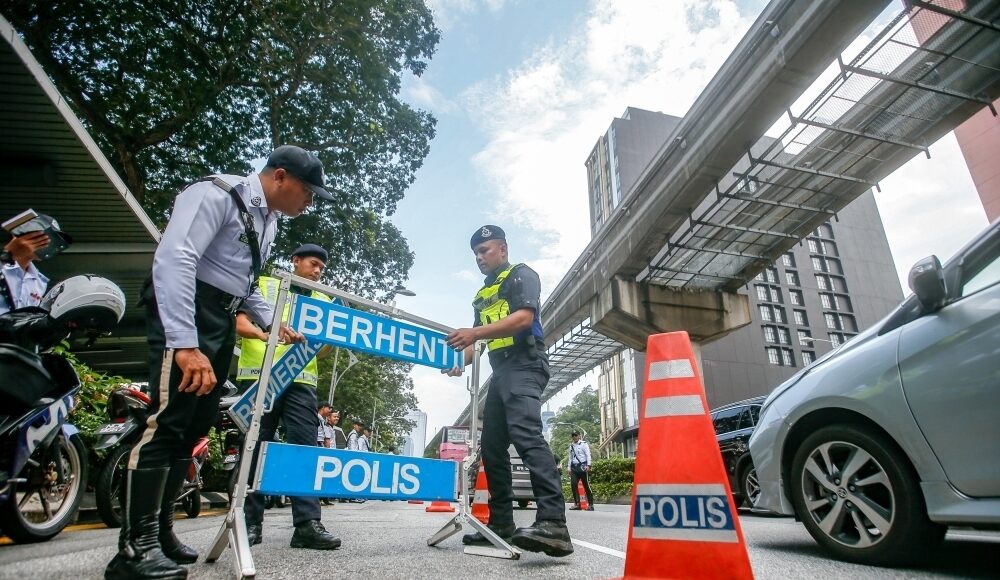May 26 — As Kuala Lumpur prepared to welcome delegates for the 46th Asean Summit in late May 2025, main highways, including every major route to KLIA and Subang Airport, were closed in phases. Even regular commuters were scrambling for alternatives as Plus Malaysia and Selangor police announced closures on the Elite and NKVE highways, advising travellers to “plan ahead” and “expect delays.”
The experience of accessing KLIA during the summit more closely resembled navigating a restricted operational zone rather than undertaking a routine commute. For passengers with early morning flights, airport workers with shifts, or ride-hailing drivers on tight schedules, the lack of timely, consolidated information resulted in missed flights, unexpected delays, and financial stress.
KLIA handled approximately 57.1 million passengers in 2024 alone. With this scale of movement, even minor lapses in coordination ripple across sectors, not just affecting travellers but also logistics, tourism, and business continuity (Centre for Aviation, 2024).
Ironically, Malaysia had already established comprehensive frameworks aimed at enhancing transport integration and smart mobility long before the summit. Launched on October 17, 2019, the National Transport Policy 2019–2030 (NTP 2030) outlines the strategic directions to develop an efficient, integrated, and sustainable transport system that “supports economic growth and the well-being of the rakyat” (PMO, 2019). Similarly, the Smart Selangor Action Plan 2025, approved in August 2020, proposes initiatives like the Integrated Traffic Information System (ITIS) and a unified public transport network to improve congestion management and real-time responsiveness (Smart Selangor, 2020).
At the federal level, the Malaysia Smart City Framework, introduced in September 2019, encourages collaboration between local authorities and technology partners in building data-driven, citizen-focused mobility systems (KPKT, 2019).
Despite these well-articulated policies, the Asean Summit held in May 2025 highlighted a gap between planning and execution. It became clear that transport agencies were operating in silos. The police managed VIP escorts, Plus oversaw the highways, local councils dealt with city roads, and airport authorities focused on terminals, but no one coordinated the entire system.
Plus announced road closures. Police published escort schedules. Airlines told passengers to switch to the KLIA Express. But without a central body managing everything in real-time, the public was left to piece it all together themselves. And if this is what happens during a planned event, what would the response look like during a sudden emergency such as flash floods or a major traffic incident?
This lack of coordination revealed that while national and state-level plans promote data sharing, system integration, and proactive traffic management, there’s still no unified command structure to put those plans into action.
If key players such as DBKL, Plus, ERL (airport train), RapidKL (rail), and ride-hailing platforms had been feeding live data into a shared system, there could have been real-time dashboards showing open routes, train frequencies, and ride availability near KLIA. A unified dashboard could have displayed alternate routes on Plus highways, KLIA Express train schedules, and nearby ride options near Subang—all in one place, accessible to the public.
The real issue lies in connecting the dots. However, developing a unified command system will require investment in digital infrastructure, data-sharing frameworks, and ongoing coordination across agencies. Yet, the cost of inaction is far greater. According to the World Bank, urban traffic congestion can cost cities up to 2–4% of GDP annually, primarily through lost productivity, fuel wastage, and delays in the movement of goods and services. In Malaysia’s context, this would mean billions of ringgit in potential economic losses each year if left unaddressed.
With much of the infrastructure already in place, the next phase is less about spending more and more about spending smarter.
Police step up security measures across Kuala Lumpur in preparation for the Asean Summit, ensuring the safety of delegates and smooth traffic management. — Picture by Hari Anggara
A unified mobility command centre
The practical solution is to formalise a Unified Mobility Command Centre that brings together all stakeholders—federal and state agencies, police, expressways, airports, transit operators, and apps. Beyond improving mobility, such a centre would reduce the economic inefficiencies caused by poor coordination, prevent service overlaps, and minimise traffic-related losses that currently cost Malaysia billions each year.
This idea is already well-grounded in existing frameworks such as Smart Selangor’s plan, which envisions a state committee and integrated transport systems, and the national Smart City Framework’s goal of building collaborative urban systems.
Critically, this centre should be built as a public-private partnership. Government agencies can set the governance model while private operators such as ERL, Grab, Waze, and Plus contribute to infrastructure, data, and service coordination. According to KPKT (2019), Malaysia’s Smart City Framework explicitly encourages such partnerships to drive implementation through co-funded pilot projects and shared accountability.
In practical terms, the centre would aggregate real-time data streams from highways (Plus, ELITE, NKVE), rail lines, city traffic systems, and airport terminals. Moreover, it would manage rerouting, signal adjustments, and real-time alerts to the public via apps and signage. It should also serve as the permanent response unit for traffic disruptions, whether caused by diplomatic events or weather-related emergencies.
This is not speculative. ITS infrastructure, VMS signboards, and API-enabled apps like Smart Selangor and Waze already exist. The next step is to integrate them into a live dashboard under a shared protocol with clear lines of authority.
It is time to turn these blueprints into reality. Not just for summits, but for everyday mobility resilience. KLIA is not just an airport; it is a national gateway. Keeping it accessible is a matter of public trust, economic continuity, and institutional maturity. The frameworks are ready, the infrastructure is in place. Now, what’s needed is smarter coordination.
With the right coordination, Malaysia can move better—efficiently, equitably, and economically.
*This is the personal opinion of the writer or publication and does not necessarily represent the views of Malay Mail.





